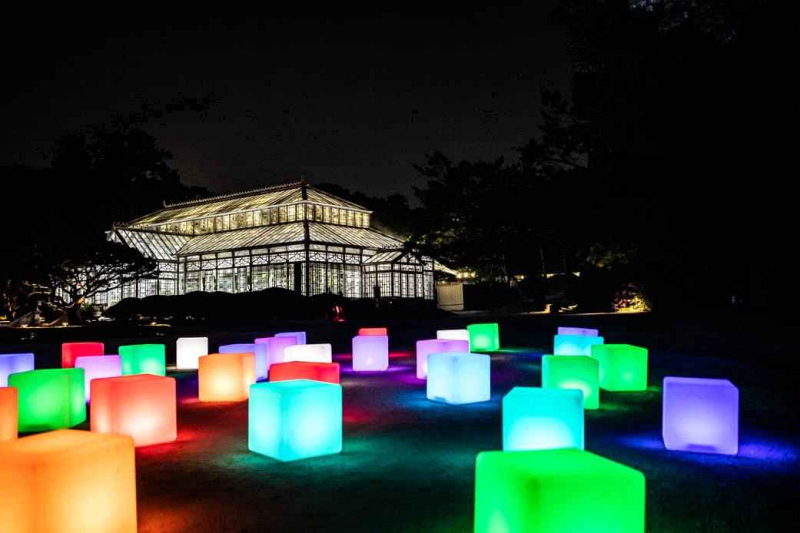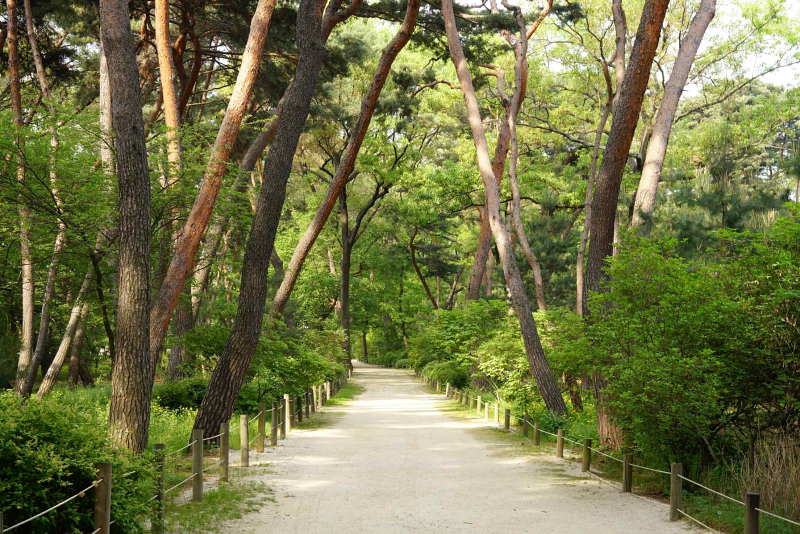Information Center
- Main page
- Information Center
- Government News
Government News
- Source
- KOREA.net
- Date
- 2024.05.14

The Cultural Heritage Administration from May 17 will offer free admission at 76 national heritage sites across the country to mark its new name Korea Heritage Service. Shown is a reenactment of the Joseon Dynasty king's walk at Gyeongbokgung Palace in Seoul's Jongno-gu District.
By Park Hyeri
Photos = Cultural Heritage Administration
National heritage sites throughout the country that charge admission will offer free entry from May 17 to mark the renaming of the Cultural Heritage Administration (CHA) to the Korea Heritage Service.
CHA on May 13 said the event will cover 76 cultural heritage sites including the four Seoul palaces of Gyeongbokgung, Changdeokgung, Changgyeonggung and Deoksugung, Jongmyo Shrine and royal tombs of the Joseon Dynasty as well as related events.
Under CHA's direct management, the four palaces, Jongmyo and the tombs will be free to the public over the period excluding the Secret Garden and paid events at Changdeokgung.
Visits to 54 national heritage sites under the jurisdiction of local governments will also be free. They include the Archaeological Site in Amsa-dong in Seoul; Suwon Hwaseong Fortress in Suwon, Gyeonggi-do Province; Ojukheon House in Gangneung and Yongyeongul Cave in Taebaek, Gangwon-do Province; Oeam Folk Village in Asan, Chungcheongnam-do Province; Gyeongju Daereungwon Ancient Tomb Complex in Gyeongsangbuk-do Province; and Seongsan Ilchulbong Tuff Cone on Jeju Island.
Free concerts and other events will also allow visitors to experience national heritage through all five senses.
The program "Royal Family's Walk," a reenactment featuring the Joseon Dynasty king, queen and crown prince at the palace under military guard, will run from May 17-19 at Gyeongbokgung. "National Palace Concert: Adding Refinement to Taste" will be held from May 17-18 at Changdeokgung featuring royal performing arts, and the night media art performance "Changgyeonggung Light Blue Flower" is slated from May 17-19 at Changgyeonggung.
An exhibition of 23 ink writings and drawings by independence activists runs from May 13 to the end of the month at Deoksugung. Mangmyoru, a building at Jongmyo where the king waited before a royal ceremony and reflected on his predecessors, will be open until June 30.

The night media art performance "Changgyeonggung Light Blue Flower" will run from May 17-19 at Changgyeonggung Palace in Seoul's Jongno-gu District.
Nine forest trails at Joseon royal tombs will be opened from May 16 to June 30. One connects Taereung and Gangneung Royal Tombs in Seoul, another is around Uireung on the city's Cheonjangsan Mountain and the one by Yeongneung Royal Tomb in Yeoju, Gyeonggi-do, allows visitors to relish nature at the city center by walking along the path.
The National Palace Museum of Korea from May 17-27 will host "Royal Book Fair," where visitors can read books at the outdoor venue in front of the museum; the exhibition "Protectors of Korean National Heritage," which tells of people who guarded national heritage, from May 17 to June 30; and "Hwaseong Reimagined: A Digital Dive into an 8-Day Royal Procession" an exhibition from May 21 to June 16 using augmented, virtual and extended reality to reenact the royal march of King Jeongjo to Hwaseong Fortress as depicted in a famous painting.
The National Intangible Heritage Center from May 17-18 will hold "Renaissance of Merriment," a performance combining the traditional and contemporary, and "Yeonhee for All," a show featuring intangible cultural heritage, from May 18-19.
More information on free admission to national heritage sites and performances are available on the websites of the Royal Palaces and Tombs Center of CHA, Korea Cultural Heritage Foundation, National Palace Museum of Korea and the center.
CHA this month will also adopt the official name of the Korea Heritage Service. The purpose of the renaming is to overcome the limits of cultural heritage policy that has been kept for about 60 years since the 1962 enactment of the Cultural Heritage Protection Act, plus discover new future values through such heritage by setting a national heritage system befitting the changing policy environment and global standards such as those of UNESCO.

This forest trail is part of the Taereung and Gangneung Royal Tombs in Seoul.
hrhr@korea.kr